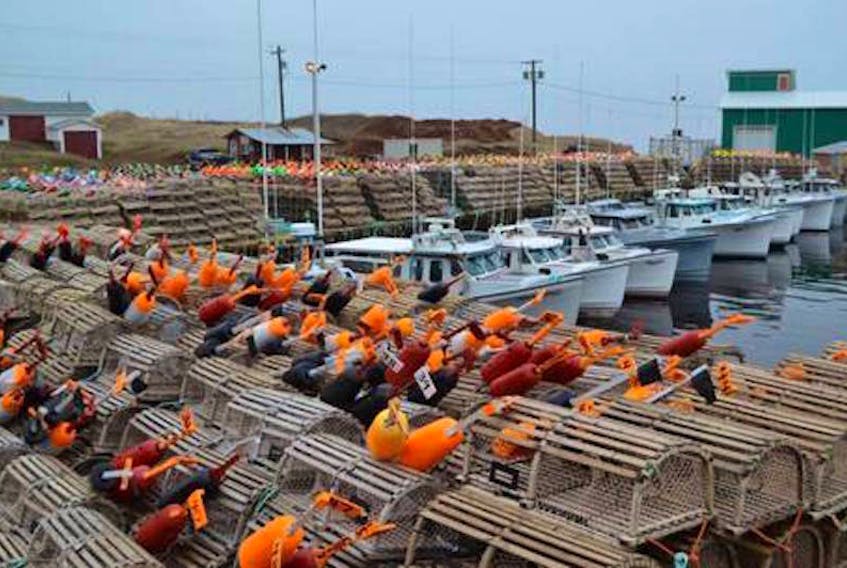EDITOR'S NOTE: Informed P.E.I. Fishers has provided two articles to provide clarity on the varying costs of P.E.I. lobster from the spring and fall seasons. Following is Part 2. (Part 1 was published on Saturday)
We aren't saying that soft-shelled, fall lobsters don't have a place in the market, because they definitely do. It just takes more of them to fill the package, and there is no place for them on the live (more lucrative and international) market.
You pay more for a higher-quality product. There are many examples of food-grading in the agri-foods sector. Consumers pay more for triple-A beef, and a fattier tuna fetches more in the Tokyo fish market. Generally, when there are differences in quality in a food product, the consumer - and the guy in the middle - are paying more. And generally, the producer (farmer, fisherman) is paid more for the higher quality product.
Such isn't the case for the Atlantic lobster industry in P.E.I. In fact, if anyone were to do the simple math, it seems that the exact opposite is true: the lower quality product is catching a higher price than the higher quality product. And this has been status quo for many years now.
The math doesn't lie.
On average, the entire meat yield from lobsters caught in the spring is approximately 30-35 per cent whereas from lobsters caught in the fall this yield drops to approximately 16-20 per cent (depending on who you ask).
If we look at the average prices for canners and markets over the last three years in LFA 24 and 26a, available at: https://www.princeedwardisland.ca/en/information/agriculture-and-fisheries/weekly-fish-price-reports), and consider meat yield (20 per cent for fall, 35 per cent for spring), what is abundantly clear is that the prices from fall to spring are not equal. For example, in 2015 spring prices were $4.33 to $4.85/lb. (for canners and markets, respectively). Considering meat yield, then fall lobsters should have been fetching $2.47 to $2.77/lb. Yet, fall prices for the same year were $4.75 to $5.25/lb. Based on these prices, the spring fishers should have been paid $8.31 to $9.19/lb.
The price disparity was even higher for 2016 - using average weekly prices of $6.20 to $6.66/lb. in the spring fishery, the fall lobsters should have been fetching $3.54 to $3.81/lb. However, prices in the fall ranged from $5.93 to $6.33/lb., resulting in a projected spring lobster price of $10.37 to $11.08/lb. Despite concerns by some fall fishermen, the past season has actually been the closest between fisheries, price-wise, in the last several years. Spring fishermen were paid $6.51 to $7.01/lb. (projected price of $3.72 to $4.01/lb. for fall) and fall fishermen were paid $4.00 to $4.50/lb. (projected spring price of $7.00 to $7.88/lb.).
And these prices don't even consider the differences in quality of product. According to local processors, fall lobsters incur a much higher cost than the spring equivalents. These costs including re-grading, processing loss and mortalities.
Another interesting fact is that soft-shell fall lobsters have a lower cook yield than their spring counterparts. If you were to take 100 lbs. of live spring lobster you get 99-100 lbs. of cooked lobster still in the shell. Whereas, the same weight of fall lobster only results in 80-89 per cent of cooked weight. That is a loss of 11-20 lbs. And if the processor is to blanch the same lobsters, you actually gain two per cent with spring lobsters, but lose five per cent with fall lobsters. So, regardless of the processing, the processors lose money with fall lobsters.
Atlantic Canada is the biggest exporter of live lobster in the world, and the entire industry brings in over a billion dollars a year - our hard-shell lobsters are widely known as the best lobsters you can buy.
So why is there this duplicitous attitude about the facts of our lobsters? If there are such glaring differences in the product they are buying, shouldn't consumers be aware? This extends to the fishermen supplying the product. If a spring fisher is supplying a higher quality product, then they should be getting more money per pound of meat than that of a lesser quality product. Why has this not been applied, let alone discussed?
We feel that it is about time to acknowledge these differences in the public forum. Looking back at the numbers from 2015-2016 it's easy to see that it was actually Paul who was being robbed, and finally in 2017, Peter got what he deserves.
- John MacPhee, Tommy Drake and Jeremy Chaisson are members of Informed P.E.I. Fishers









